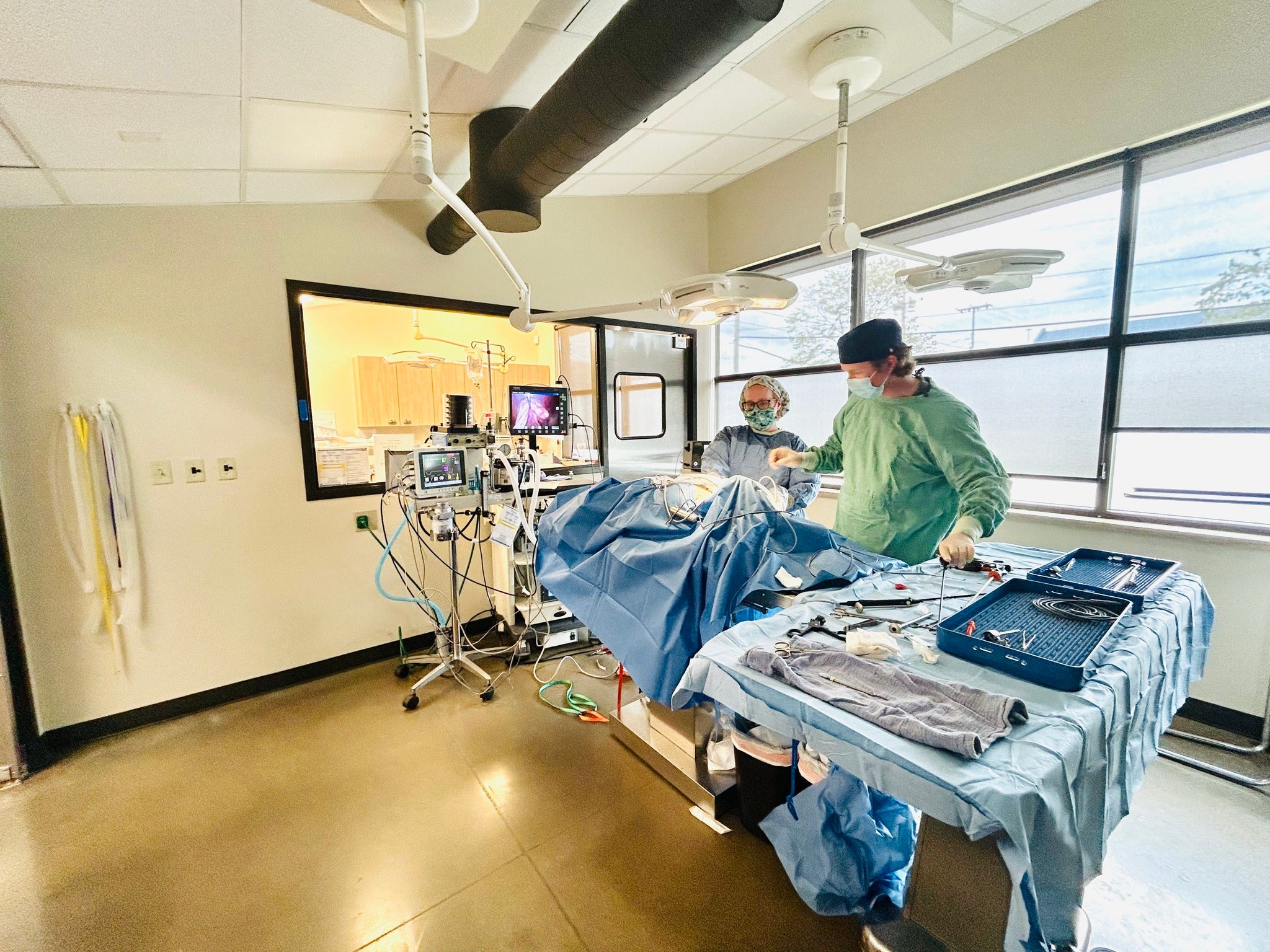Laparoscopic Surgery for Dogs and Cats: A Safer, Less Invasive Option
At Valley West Veterinary Hospital, we’re committed to providing the highest level of care and the latest advancements in veterinary medicine. One of the most exciting technologies we offer is laparoscopic (or “keyhole”) surgery — a minimally invasive technique that can make a big difference in your pet’s comfort, recovery, and overall surgical experience.
What is Laparoscopic Surgery?
Laparoscopy involves making one or more very small incisions — often the size of a keyhole — in your pet’s abdomen. Through these openings, our veterinarians insert a tiny laparoscopic camera and specialized instruments. The camera projects a magnified, real-time image onto a monitor, allowing our surgeons to view internal organs in detail and guide their instruments with precision. This approach avoids the large incisions required in traditional surgery.
Benefits of Laparoscopic Surgery
Laparoscopic surgery offers several advantages over traditional open abdominal surgery, including:
- Smaller incision sites (often just 5–10mm)
- Less postoperative pain and reduced need for pain medication
- Faster recovery time — many pets resume activity in just a few days
- Lower risk of complications such as bleeding or infection
- Improved visualization for more precise surgical work
Procedures Commonly Performed with Laparoscopy
Laparoscopic surgery can be used for many procedures, including:
- Liver or intestinal biopsies
- Spaying (ovariohysterectomy or ovariectomy)
- Stomach-tacking (gastropexy) in large-breed dogs to prevent bloat
- Surgical neutering (especially for cryptorchid cases)
- Bladder surgery to remove stones
- Arthroscopy to confirm joint ligament injuries
Laparoscopic Spays
Spaying is one of the most common surgeries for dogs and cats.
Traditionally performed through a large abdominal incision, spays can now be done laparoscopically with:
- Two or three tiny incisions
- Reduced tissue handling, leading to less inflammation
- Up to 65% less post-operative pain compared to traditional spays
This means your pet returns to her normal, happy self more quickly and with less reliance on pain medication.
Laparoscopic Gastropexy (Bloat Prevention)
A laparoscopic gastropexy attaches the stomach to the abdominal wall to prevent gastric dilatation-volvulus (GDV), also known as bloat — a life-threatening condition in large, deep-chested breeds such as Great Danes, German Shepherds, Standard Poodles, and Weimaraners.
Benefits of laparoscopic gastropexy include:
- Performed through small incisions with minimal tissue disruption
- Often combined with spay or neuter to limit anesthesia exposure
- Shorter recovery and less surgical discomfort
Laparoscopic Biopsies
Laparoscopic biopsies allow our veterinarians to collect tissue samples through tiny abdominal incisions. This method provides precise sampling while minimizing pain and recovery time compared to open surgery.
Ideal Candidates for Laparoscopic Surgery
While many pets can benefit, laparoscopic surgery is especially ideal for:
- Dogs weighing at least 30 pounds
- Large-breed dogs at risk for bloat
- Active, high-energy pets that need a faster recovery
Cost and Insurance Coverage
Laparoscopic surgery is generally more expensive than traditional open surgery, but the benefits often outweigh the cost. In many cases, pet insurance treats laparoscopic procedures the same as open surgery.
However, coverage may vary by provider and procedure type:
- Spays: Typically elective and not covered by insurance, whether open or laparoscopic. The cost of laparoscopic spays is usually only slightly higher.
- Cryptorchid neuters: Often covered by insurance, and may be performed laparoscopically.
We recommend reviewing your pet insurance policy or contacting your provider directly to confirm coverage details.
The Valley West Difference
Our experienced surgical team and registered veterinary technicians are highly trained in laparoscopic techniques, and we use state-of-the-art equipment to ensure the best outcomes. Each patient is carefully assessed to determine whether laparoscopic surgery is the safest and most effective option.
Ready to Learn More?
If your pet is due for a spay, or if you own a large-breed dog at risk for GDV, ask us about laparoscopic surgery. You’ll be giving your pet a safer procedure, smaller incisions, and a quicker return to their tail-wagging or purring self.

